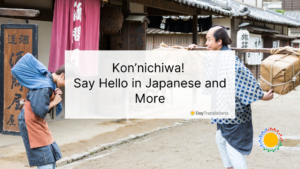The capital of South Korea, Seoul, officially known as Seoul Special City, is a rising global metropolis that has become an international leader in terms of cultural influence and economic gain. This city’s economic boom is so great that the locals call it the “Miracle on the Han River” as Seoul reached the fourth spot worldwide in having the largest GDP of a metropolitan economy despite being damaged after the Korean War. It is also so well developed that 15 of the Fortune Global 50 companies are based in the city, including the largest tech company in the world, Samsung, LG Electronics and automobile makers Hyundai-Kia. Moreover, it is the most wired city in the world and is top-ranked in terms of technological readiness.
Seoul is home to the world’s busiest subway system. The Seoul Metropolitan Subway presently has a total of 19 lines. Also, the Incheon International Airport was rated as the best airport in the world from 2005 to 2013, or nine years in a row. In 2010, the city was designated the World Design Capital by UNESCO.
Seoul’s communication infrastructure is technologically advanced, with the city wired with the world’s leading fiber-optic broadband connection with speeds that can reach up to 1Gbps. With this investment, Wi-Fi Internet is widely available, freely accessible to locals and visitors from 10,430 public areas in the city.
Seoul – A fantastic tourist hub
While the city of Seoul is densely populated, it is also the area where you can see five designated World Heritage Sites: the beautiful Changdeok Palace, the Royal Tombs of the Joseon Dynasty monarchs, the Hwaseong Fortress, the Namhansanseong (a huge mountain fortress) and the Jongmyo Shrine (14th century Confucian shrine where the memorials of Joseon kings and queens are observed in perpetuity).
There are still many historic icons that are located within Seoul, which vie for space with modern constructions and natural attractions such as Mount Bukhan Park, Lotte World (second largest indoor theme park in the world), N Seoul Tower, the neofuturistically-designed Dongdaemun Design Plaza, the Sevit Floating Islands and the Moonlight Rainbow Fountain, installed on the Banpo Bridge over the Han River that connects the districts of Yeongsan and Seocho. The fountain is considered the longest bridge fountain in the world. The 63 Building, which is clad in gold, glows magnificently during sunset and shines with blinding light for 23 minutes during sunrise.
Other remnants of the past include city gates, such as the East Great Gate or Dongdaemun and the South Great Gate or Namdaemun. Close to the gates are traditional markets and a large shopping center, the Dongdaemun Market and the Namdaemun Market.
Seoul has 115 museums, including the National Folk Museum in Jongno, which is within the Gyeongbok Palace grounds, the Namsangol Hanok Village and the Bukchon Hanok Village. A “hanok” is a traditional house in Korea. The folk villages allow visitors to experience what traditional Korean life was like during the Joseon dynasty. Modern museums include the Seoul Museum of Art and the Ilmin Museum of Art.
Seoul is surrounded by mountains and maintains several parks, with modern structures, monuments, sculpture pieces, intermixed with natural elements that include trees, flowering bushes, ponds, streams and other works of nature.
Hallyu and K-Pop Culture
Tourists mostly from neighboring Asian cities have been swamping the South Korean capital due to the Korean wave, also called Hallyu, which started with the export of Korean dramas, in particular, the hit TV series, “Winter Sonata” in 2002. From then on, the interest moved to movies and popular music. The massive success of Korean pop culture, or K-pop as it is commonly referred to, has emerged into its modern form in 1992. This musical genre covers dance-pop, electronic, pop ballad, hip-hop music, R&B, and even rock and metal.
In the 2000s, K-pop started to globalize by breaking into foreign markets through social networking and video sharing platforms. By 2012, its growth rates reached almost US$3.4 billion, making it “South Korea’s Greatest Export,” as Time magazine describes it. The Korean Wave gained momentum after it successfully secured the East Asian market before heading towards different parts of the world.
Language
Korean is the official language in South Korea and in North Korea. The Seoul or the Gyeonggi dialects are the basis for the standard Korean that is spoken in the Seoul National Capital Area (Gyeonggi, Incheon and Seoul in South Korea) and in North Korea’s city of Kaesŏng. The Seoul accent has three variations: modified, general and conservative. The conservative accent is used by people who have lived in Seoul before the 1970s. Today’s news anchors usually use the general form while the modified version is mainly used by the younger generation.
Korean language has two number systems, which can be confusing for non-Korean speakers. The native Korean system is used for small numbers (1-99) and for age (years) and the Sino-Korean system, which is used for numbers from 100 and above and for phone numbers, addresses, money and dates. Time is told with a mix of native Korean and Sino-Korean systems. Native Korean numbers are used for the time and the Sino-Korean numbers for the minutes and seconds.
Korean is largely influenced by the Chinese language and its lexicon is a mix of native Korean, Sino-Korean words and loan words, majority of which came from the English language. It is ingrained in every Korean citizen to respect their elders and their language has seven speech levels that indicate the level of formality shown by the verb endings.
Likewise there are many words in Korean that have several meanings. For instance, “cho” could be beginning, candle or second/s. The word “bae” could mean a ship, stomach or pear. “Sagwa” could refer to an apple or an apology.
Did you know?
• A local delicacy, patbingsoo, which is shaved ice topped with sweetened red beans (Adzuki beans), chopped fruits, condensed milk and fruit syrup, is usually sold in most bakeries, cafés and fast food joints in Korea. However, this is one dessert that is also served in one of the top 500 hotels in the world, the Hotel Shilla, which is located in Seoul. Of course, there is a major price difference between the one sold in most food joints and the one served at the hotel, which is said to have ice that is as fine as snow.
• Seoul is the location of the world’s largest church, the Yeouido Full Gospel Church, which has a one million membership.
• Asia’s largest underground mall, the Coex Mall is found in Seoul and houses the only museum in the world dedicated to South Korea’s favorite health food, kimchi.
• Jjajangmyeon, a popular Korean snack made of thick noodles topped with thick black bean sauce with pork and vegetables is actually a Chinese dish.
Fun and Interesting Facts about Seoul
• Color-coded taxis. Basic cars are colored white or gray with relatively inexperienced drivers, while black cabs are operated by more experienced drivers with more luxurious cars.
• A mega-city. With a population of more than 10 million people, Seoul is home to almost half of the entire population of the country. It has a density of 17,288 people per square kilometer.
• Different names. Seoul had several different names throughout its history, including Namgyeong, Wiryeseong and Hanyang (Hanseong), the name the capital city used during the Joseon dynasty. It was not until 1945 that it was named “Seoul,” believed to be a derivative of “Seorabeol,” a term that literally translates to “capital city” in the Korean language. When it was under Japanese rule, the city was called Keijō.
• First cloned dog. “Snuppy,” a cloned dog, was created for the first time at the Seoul National University.
• Dominated by girl groups. Girl pop groups are the craze in Seoul and in the entire country in general. The likes of the Wonder Girls, 2NE1, and Girls’ Generation, among others, are found everywhere from billboards, TV commercials, and ramen packages.
• Smart homes. With ultra-advanced technology, the robot vacuum cleaner is already old-fashioned. Many apartments in the high-rise buildings can already be controlled via smart phones and central keypads.
• 24-hour study rooms. Education is very valuable to South Koreans, and most households avail of after-school tutoring. To provide for quiet studying atmospheres, there are study rooms available around the clock.
• Gaming channels. In a country where online gaming is a professional sport, there are channels on cable television devoted to online gaming.
Famous People from Seoul
• Pak Tae-Hwan. The Olympian swimmer was the first Korean to win a medal in the sport. Moreover, he is the first Asian winner of a gold medal in the 400-meter freestyle back in 2008 at the Beijing Summer Olympics.
• Hines Ward. He’s a football player who spent 14 years with the Pittsburgh Steelers throughout his NFL career. The wide receiver was instrumental in helping his team win games in Super Bowls XL and XLIII.
• Bae Yong Joon. He’s a television actor who appeared on big hits such as Winter Sonata and made his debut on the big screen in 2003 in the film, “Untold Scandal.” Winter Sonata made him a household name in Japan, where he was called “Yon-sama” or “Emperor Yon.” The Narita Airport had to be closed for his 2004 book tour due to the number of fans who flocked to the event.
• 2NE1. This is a girl group composed of CL, Dara, Minzy and Park Bom. They won numerous awards including “Song of the Year” for 2009 and 2011 and had several big hits.
• Shinee. The boy group consisting of Onew, Key, Minho, Jonghyun and Taemin debuted on 2008 with the single “Replay.” Since then, they have released seven full-length albums and many singles. They are known for their distinct fashion and complex synchronized dancing.
• Girls’ Generation also known as SNSD. This girl group composed of eight members rose to prominence in 2009 with their record-breaking single, “Gee,” which was on top of the charts for nine consecutive weeks.
• Wonder Girls. This girl group is also successful in America, with Creative Artists Agency co-managing their career in the United States. They are the first South Korean group to have entered the Billboard Hot 100 chart at number 76.












Sorry, the comment form is closed at this time.